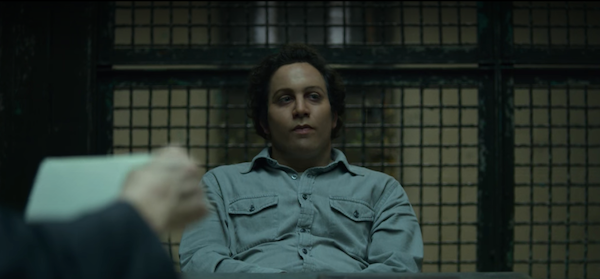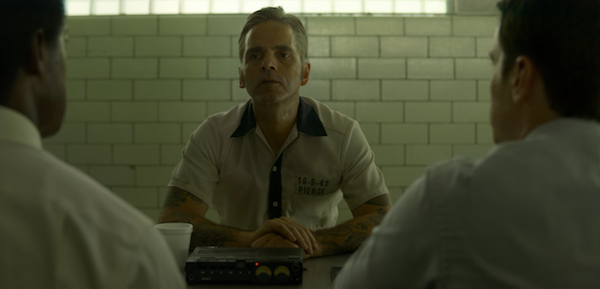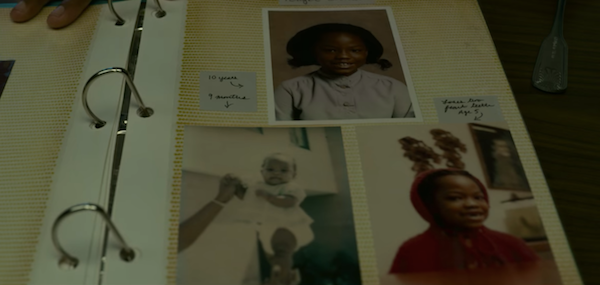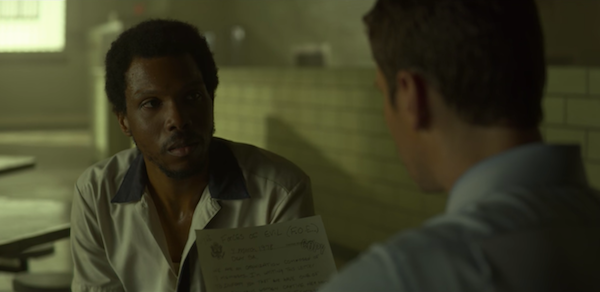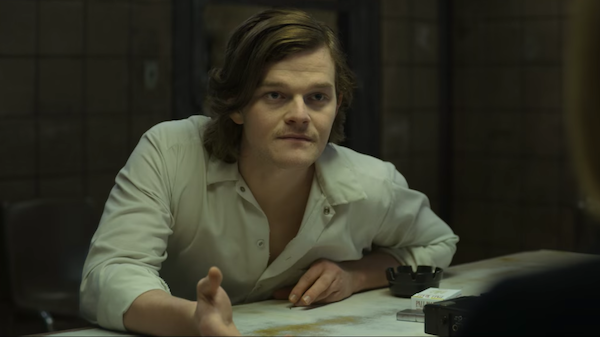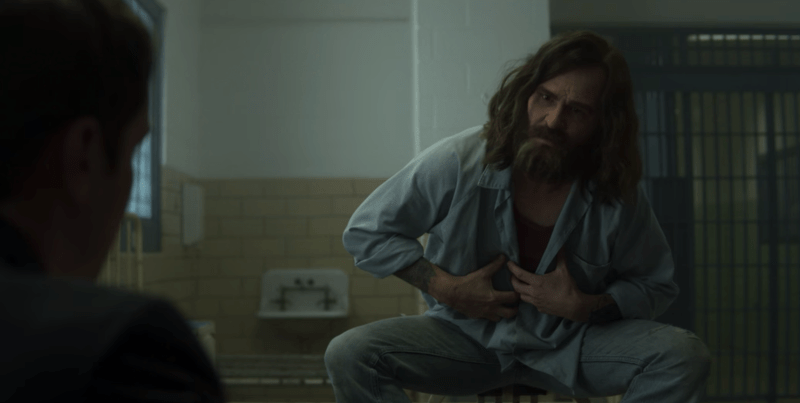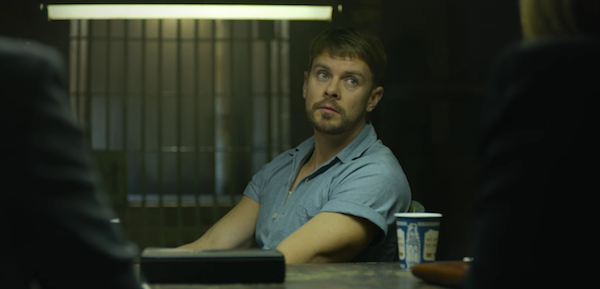Mindhunter Season 2 has finally arrived on Netflix, giving audiences another series of deep dives into the twisted mind of a sociopath courtesy of executive producer and director David Fincher. This season’s storyline saw us looking at everyone from the most infamous killer in the world to small-time murderers whose names haven’t withstood the test of time, all of whom are based on real-life killers. For those curious about the true story behind these folks, we’re breaking down all the cases Mindhunter season 2 brought up to look at just why they remain so utterly terrifying.
Dennis Rader (BTK)
Dennis Rader has been a presence since Mindhunter started, capturing the attention of the Behavioral Sciences Unit. Rader was well-known in his Kansas community, working as an ADT salesman (which, because of his crimes, led to an uptick in home security systems) and serving as the president of his church council.
Rader, known by his moniker BTK (“Bind, Torture, Kill”) was convicted of ten murders committed between 1974 and 1991 throughout the Witchita area of Kansas. The show examines Rader’s first murder of Joseph and Julie Otero and their two children, as well as the attempted murder of Anna Williams who, in 1979, escaped Rader after she came home later than he had planned. Rader was known to stalk his victims intensely, so much so that two potential victims moved away and got restraining orders against him before he was caught.
Similar to the Zodiac, Rader enjoyed taunting the police and writing to his local television station, KAKE, demanding media attention. He would even write letters denying his involvement in certain crimes but praising the work of the person who did it, as was the case with the Fager family murders in 1988.
Rader was eventually caught due to this desire to be recognized. In 2004, after the case had grown cold, BTK started leaving a series of clues and copies of evidence throughout the city. He was eventually caught by sending a floppy disk to KAKE which the police were able to glean metadata from. That, combined with taking DNA from a pap smear of Rader’s daughter (yes, that’s true), the police were able to make a familial match between Rader and one of his victims.
Dennis Rader is currently serving a minimum 175-year prison sentence at the El Dorado Correctional Facility in Kansas.
David Berkowitz (Son of Sam)
David Berkowitz, known as the Son of Sam or the .44 Caliber Killer, was arrested and convicted of six shooting deaths (injuring seven more) starting in 1976 with the murder of Donna Lauria. Berkowitz was known to cruise the streets of New York targeting women, usually ones with long dark hair. Similar to the Zodiac, Berkowitz often targeted women in cars with their boyfriends. He also sent letters to the police and newspapers promising future crimes that ended up giving him insane amounts of press coverage.
As the subject of the biggest manhunt in New York, Berkowitz’s crimes continued well into the next year. He was eventually arrested in August of 1977 after his car was ticketed, sparking a series of events that culminated with police discovering crime scene maps and threatening letters to the police. When Berkowitz was arrested outside his Yonkers home he asked the police, “How come it took you such a long time?”
Berkowitz quickly gave a full confession stating that he was compelled to kill people because of a demon living inside his neighbor Sam Carr’s dog which compelled him to do things. After three separate mental health examinations and in spite of Berkowitz’s story he was deemed competent to stand trial where he pled guilty to all the charges. He was sentenced to 25-years-to-life in prison for each murder. In 1979 he told reporters that the demonic possession story was a hoax and, according to an interview with psychiatrist David Abrahamson, he killed because he felt rejected by society.
The Son of Sam case also inspired the “Son of Sam” laws which prohibit convicted criminals and their relatives from profiting off their crimes.
William Pierce Jr.
One of the more undocumented killers in this season of Mindhunter, William Pierce, Jr. was charged with nine murders throughout the Georgia, North and South Carolina areas, including that of 13-year-old Margaret “Peg” Cuttino. The daughter of a South Carolina state senator, Cuttino disappeared after leaving school for the day in 1970 and was found 12 days later, bludgeoned and assaulted.
There’s much dispute about Pierce’s culpability in the Cuttino murder despite how it plays out in Mindhunter. It’s said that Pierce was a pathological confessor who, at the time of Cuttino’s discovery, was already facing charges for the other murders he committed, which included the death of a housewife and several gas station attendants. Pierce himself said his confession to Cuttino’s murder was the result of police brutality.
Pierce was sentenced to life in prison in 1973 where he remains to this day.
Atlanta Child Murders
The Atlanta Child Murders span the years 1979-1981 when 28 children and young adults were murdered and left in various makeshift graveyards (including the Chattahoochee River) throughout the city. The first murders were that of 14-year-olds Edward Hope Smith and Alfred Evans with murders happening two times a month. Several of the victims knew each other and nearly all the disappearances took place in the same 11 major streets in the Memorial Drive area. The children ranged from ages 7-14, all killed by strangulation.
Criticism against the investigation happened from the start, with the victims' families and others in the community decrying the police for their lack of investigation, chalking up the disappearances as runaways until bodies were discovered. A nightly curfew was put in place and children were taken out of neighborhood schools. A stakeout of major bridges near the Chattahoochee River was planned, as it was presumed the killer would be watching the media coverage and would dump a body in water to cover his tracks.
On May 22nd, 1981, the FBI stopped Wayne Williams on one of the bridges after hearing a splash. Williams initially claimed he was dumping trash in the river before changing his story to say he was just passing through. Williams claimed to be driving to audition a female singer as part of his job as a music promoter, though he couldn’t remember the woman’s address or any record of his appointment with her. During the investigation, it was discovered that fibers on the victims matched fibers in Williams’ parents’ house as well as dog hairs that matched his family’s canine. Williams also failed an FBI-administered polygraph, though it was not admissible in court. It was assumed that Williams’ makeshift job as a music promoter helped him lure in gullible children looking to make a quick buck.
Williams was brought to trial for two of the 28 murders, though authorities said two could prove a link to at least 12 more. The trial lasted six days between 1981 and 1982 culminating in Williams’ conviction for two of the murders. He was sentenced to two consecutive life terms in Hancock State Prison. Unfortunately, the conviction led the police to assume all the murders were solved and Williams was never brought up on additional charges.
In 2005, DeKalb County reopened the investigation into five of their child murders, believing that Williams, who maintains his innocence, was not the killer. Since that time numerous police and profilers have alluded to Williams being a patsy, with claims that the KKK, police, and sex traffickers were involved in the murders. DNA analysis of dog and human hair conducted with modern technology has still never ruled out Williams, though in March of 2019 Atlanta’s Mayor Keisha Lance Bottoms and Atlanta Police Chief Erika Shields announced plans to retest evidence.
William Hance
William Hance was tried, convicted, and executed for the murder of at least four women in 1978. Hance heavily wanted his actions publicized, sending a series of letters and phone calls purportedly from a group of white vigilantes known as the “Forces of Evil.”
After the bodies of Gail Jackson and Irene Thirkield were discovered an FBI-created profile determined that the killer was a lone African-American male who was probably a low-ranking member of the military. A search of local dive bars led the police to Hance, an Army truck driver. Hance confessed to the killings and admitted to a third murder which he was only tried by a military court for. He was later discovered to have committed a four murder but was never charged.
Hance was executed by the state of Georgia on March 31st, 1994 though his conviction has been highly debated to this day. The jury at his trial only consisted of one black juror and it was later admitted by others that racial remarks and proof of bias were said during the decision making phase.
Elmer Wayne Henley, Jr.
In 1971 at the age of 15 Elmer Wayne Henley, Jr. met Dean Corll, who offered Henley money for providing him with young boys, presumably to sell into sex trafficking. Henley, short of cash, took Corll up on his offer, kickstarting a series of deaths coined the Houston Mass Murders. Henley lured young men, nearly all under the age of 18, to Corll’s house with the promise of smoking pot. There the men were assaulted, tortured and strangled. Several of the boys were friends of Henley himself. Corll would eventually be connected with 28 murders, over half of which Henley participated in.
On August 8th, 1973 Henley invited 19-year-old Timothy Kerley to Corll’s house, with the goal of making him the next victim. Tagging along was 15-year-old Rhonda Williams. Corll became incensed at Henley for bringing a girl along and tied everyone, including Henley, up with a rope. Henley was eventually let go and told to rape and kill Williams. Henley decided enough was enough and grabbed Corll’s pistol, shooting him several times. He let Kerley and Williams go and called the police.
Henley made a full confession and in 1973 was brought to trial. The court factored in Henley’s murder of Corll—which was deemed self-defense—and his helping the police find Corll’s burial sites into the decision making process. Henley was charged with six murders and given six consecutive 99-year sentences. Attempts at appeal have been unsuccessful. Henley is eligible for parole in 2025.
Charles Manson
The most infamous name of all time, Charles Manson is a killer who technically never lifted a finger. Manson started his life of crime as a child, ending up in reform schools and juvenile halls from an early age. He eventually worked his way up to armed robbery, ending up in Terminal Island prison for three years. In 1967 Manson moved to Berkeley, California, amassing followers and calling himself another incarnation of Jesus Christ. His group, eventually dubbed “the Family” took over the abandoned Spahn Movie Ranch in 1969, with Manson believing that an apocalypse was coming and that a race war, dubbed “Helter Skelter”, would soon break out.
On July 25th, 1969 two of Manson’s Family killed music teacher Gary Hinman, hoping to secure his $21,000 inheritance for their own purposes. Manson acolyte Susan Atkins wrote the words “political piggy” on the wall in Hinman’s blood. Two days later Manson told the Family they would kick off “Helter Skelter” themselves.
On August 8th, four of Manson’s followers—Watkins, Charles “Tex” Watson, Patricia Krenwinkel, and Linda Kasabian—drove to the former house of Terry Melcher, a music executive who had blown Manson off in his quest to become a singer. There they murdered hairstylist Jay Sebring, Abigail Folger and her boyfriend Wojciech Frykowski, and actress Sharon Tate, who was 8-months-pregnant. Like the Hinman murder, the word “pig” was written in Tate’s blood. The next night Manson himself traveled with several Family members to the home of grocery store executive Leno LaBianca and his wife, Rosemary. A third murder was planned but not pulled off.
Manson was arrested and brought to trial in 1970. The events became nothing short of a circus with Manson engaging in outbursts regularly. Though Manson didn’t actually kill anyone, the prosecution argued that his complete brainwashing and control over the Family compelled them to kill. He and three other Family members were sentenced to death in 1971, though when California overturned the death penalty in 192 his sentence was commuted to life in prison. In 2014, it was reported that Manson was engaged to a 26-year-old woman named Afton Elaine "Star" Burton but a wedding never took place. Mason died in prison in 2017 at the age of 83.
Paul Bateson
In 1973, Paul Bateson got his on-screen debut as radiological tech in William Friedkin’s adaptation of The Exorcist. Unfortunately, the cameo didn’t lead to any future success. His excessive drinking also led to him being let go from his job as an X-ray technician. He worked odd jobs, including being a ticket-taker at a porno theater and visiting local leather bars.
On September 14th, 1977 Variety reporter Addison Verrill was found beaten and stabbed to death in his own apartment. The police quickly ruled out robbery as nothing of value was taken and it was apparent Verrill let his killer in. An article by Village Voice reporter Arthur Bell led Bateson to call the journalist. Bateson said he wasn’t a psychopath and in fact had no idea the man he met at the leather bar was an important person.
He admitted that Verrill and he drank, did drugs, and had sex. After Verrill passed out, Bateson admitted to stabbing him. Bell reported the conversation to the police. A second call from a former friend of Bateson’s led to his arrest and subsequent confession that matched Bell’s story. The police assumed Bateson was responsible for other murders of gay men in the area but this has never been confirmed and no additional charges were brought.
Bateson went on trial in 1979 and was sentenced to 20 years to life in prison. He ended up serving 24 years and was eligible for parole in 1997. He was ultimately released in 2003 and his parole was completed in 2008. It’s currently unknown where Bateson is or whether he’s even still living.



